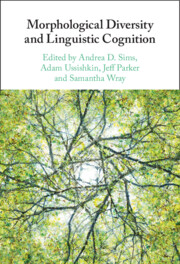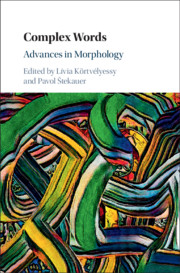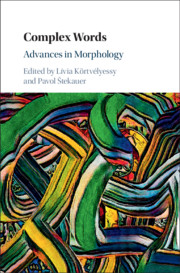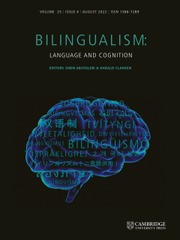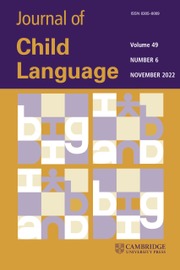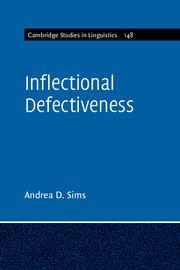Morphological Diversity and Linguistic Cognition
Morphological structures interact dynamically with lexical processing and storage, with the parameters of morphological typology being partly dependent on cognitive pathways for processing, storage and generalization of word structure, and vice versa. Bringing together a team of well-known scholars, this book examines the relationship between linguistic cognition and the morphological diversity found in the world's languages. It includes research from across linguistic and cognitive science sub-disciplines that looks at the nature of typological diversity and its relationship to cognition, touching on concepts such as complexity, interconnectedness within systems, and emergent organization. Chapters employ experimental, computational, corpus-based and theoretical methods to examine specific morphological phenomena, and an overview chapter provides a synthesis of major research trends, contextualizing work from different methodological and philosophical perspectives. Offering a novel perspective on how cognition contributes to our understanding of word structure, it is essential reading for psycholinguists, theoreticians, typologists, computational modelers and cognitive scientists.
- Brings together research reflecting different methodologies and disciplinary perspectives
- Discusses how language processing is tuned to the morphological structure of a language
- Explores how system-level principles of morphological organization emerge
Product details
No date availableAdobe eBook Reader
9781108847902
0 pages
Table of Contents
- 1. At the intersection of cognitive processes and linguistic diversity Andrea D. Sims, Adam Ussishkin, Jeff Parker and Samantha Wray
- Part I. In What Ways Is Language Processing Tuned to the Morphological Structure of a Language?:
- 2. Tuning language processing mechanisms to a language's morphology without decomposition: The case of semantic transparency Laurie Beth Feldman and Fermín Moscoso del Prado Martín
- 3. Productivity effects on morphological processing in Maltese auditory word recognition Samantha Wray and Adam Ussishkin
- 4. Phonotactic and morphological effects in the acceptability of pseudowords Jeremy M. Needle, Janet B. Pierrehumbert and Jennifer B. Hay
- Part II. What ROLE DOES CUE INFORMATIVITY PLAY IN LEARNING AND HOW THE LEXICON EVOLVES OVER TIME?:
- 5. How agglutinative? Searching for cues to meaning in Choguita Rarámuri (Tarahumara) using discriminative learning Gabriela Caballero and Vsevolod Kapatsinski
- 6. Words, probability, and segmental information: Less probable words have more informative segments Adam King and Andrew Wedel
- 7. Learning complex morphological patterns: The role of syncretism and markedness Sara Finley
- Part III. How Do System-Level Principles of Morphological Organization Emerge?:
- 8. Morphology gets more and more complex, unless it doesn't Eric Meinhardt, Robert Malouf and Farrell Ackerman
- 9. Network structure and inflection class predictability: Modeling the emergence of marginal detraction Jeff Parker, Robert Reynolds and Andrea D. Sims
- 10. Rule combination, potentiation, affix telescoping Gregory Stump.

